Tables And Shares Chapter Notes | Mathematics for Class 4: NCERT PDF Download
| Table of contents |

|
| Introduction |

|
| Flower bed |

|
| Jars in the shelf |

|
| How many Cats? |

|
| Jumping Animals |

|
| Sea Shells |

|
| Gangu Sweet |

|
| Children and their Grand Father |

|
| Story Problems |

|
Introduction
"Today, we're exploring tables and shares! Tables help us organize information neatly, while understanding shares teaches us how to divide things equally. From snacks to data, these skills are essential for solving problems and working together effectively. Let's dive in!"
.png)
Flower bed
The flower bed concept combines elements of patterns and tables in gardening. Rows represent different types of flowers, while columns categorize characteristics like color or height. This arrangement organizes information like a table, while the layout creates a visually appealing pattern in the garden.
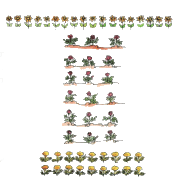
18 = 1 × 18 So there are 1 rows with 18 plants each.
18 = 6 × 3 So there are 6 rows with 3 plants each.
18 = 2 × 9 So there are 2 rows with 9 plants each.
Jars in the shelf
Jars on a shelf blend patterns and organization. Rows categorize items like spices or ingredients, while columns denote characteristics like size or type. This arrangement creates a visually appealing pattern while organizing items for easy access and comparison.
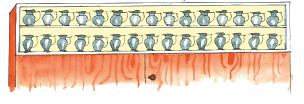
How many Cats?
In "How Many Cats," we're exploring patterns and counting. Picture rows of cats, each with a different number. Counting the cats in each row and multiplying by four (for their legs) gives us the total number of legs. This activity sharpens counting skills, introduces basic multiplication concepts, and highlights patterns in numbers. 
Jumping Animals
In "Jumping Animals," we're exploring patterns and multiplication. Imagine animals like frogs, each with a unique jumping pattern. For example, a frog jumps three steps at a time. If we have 27 steps, we can divide the total number of steps by the number of steps each animal jumps in a single leap. So, if the frog jumps three steps at once, we divide 27 by 3 to find the number of jumps. This activity helps us understand multiplication concepts and identify patterns in numbers.
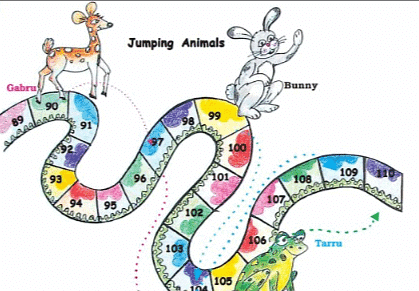
Sea Shells
In "Sea Shells," we're exploring subtraction and patterns. Imagine you have 112 sea shells, and you take out 28 shells. To find out how many shells remain, we simply subtract the number taken out from the total. So, if we subtract 28 from 112, we find that 84 shells remain. This activity helps us practice subtraction and understand how numbers change when we take items away.
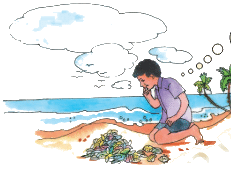
Gangu Sweet
In packing sweets, using a table involves organizing boxes with rows and columns. Each row represents a box, while columns categorize sweets by characteristics like flavor or type. This method streamlines packing, ensuring each box contains a balanced assortment of treats.
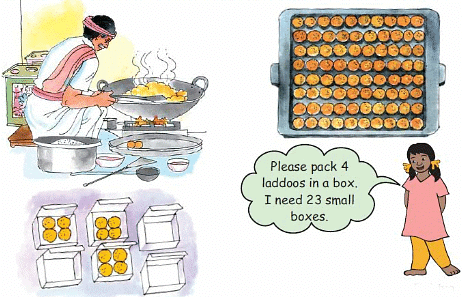
Children and their Grand Father
Sharing, or dividing, involves fairly distributing items among people. For example, if you have 12 candies and want to share them among 4 friends, you divide 12 by 4 to ensure each friend receives an equal share of 3 candies. This concept teaches us about division, fairness, and equitable distribution.

Story Problems
As there are four people so total cost of ticket would be = ₹ 4 x 62 = ₹248
|
26 videos|142 docs|34 tests
|
FAQs on Tables And Shares Chapter Notes - Mathematics for Class 4: NCERT
| 1. How can I design a flower bed in my garden? |  |
| 2. How many cats are typically needed to keep a garden free of pests? |  |
| 3. What are some common jumping animals that can be found in gardens? |  |
| 4. How can sea shells be used in gardening? |  |
| 5. What is Gangu Sweet and how is it made? |  |
















